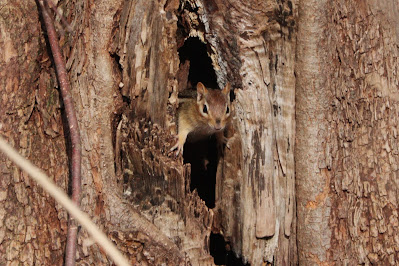Algonquin Visitor Centre!
The Visitor's Centre on highway 60, can be a great place to view winter finches. The mild winter unfortunately brought Black Bears out of hibernation earlier than normal so the bird feeders were taken down prior to our arrival. Luckily many birds were still nearby despite the reduced food sources.
The Evening Grosbeak is one of my favourite winter finch species that can usually be found in abundance in Algonquin Park.
Evening Grosbeaks can crush seeds that are too large for Common Redpolls and Pine Siskins to open. These smaller birds often seek out the grosbeaks and eat the food scraps that are left behind.
https://www.allaboutbirds.org/guide/Evening_Grosbeak/overviewCommon Redpolls will sometimes tunnel into the snow to stay warm during the night! Tunnels may be more than a foot long and 4 inches under the insulating snow!
https://www.allaboutbirds.org/guide/Common_Redpoll/overview#
Snow Buntings are larger than Dark-eyed Juncos and smaller than American Robins.
Red Crossbills have specialized "crossed" bills that allow them to break into unopened cones to extract seeds. Even nestling birds will be fed seeds so adults will nest wherever and whenever they find abundant food sources, sometimes nesting even in winter!
https://www.allaboutbirds.org/guide/Red_Crossbill/overview
Adult Red Crossbills are known to perch on the top of evergreen trees to watch for predators.
























































